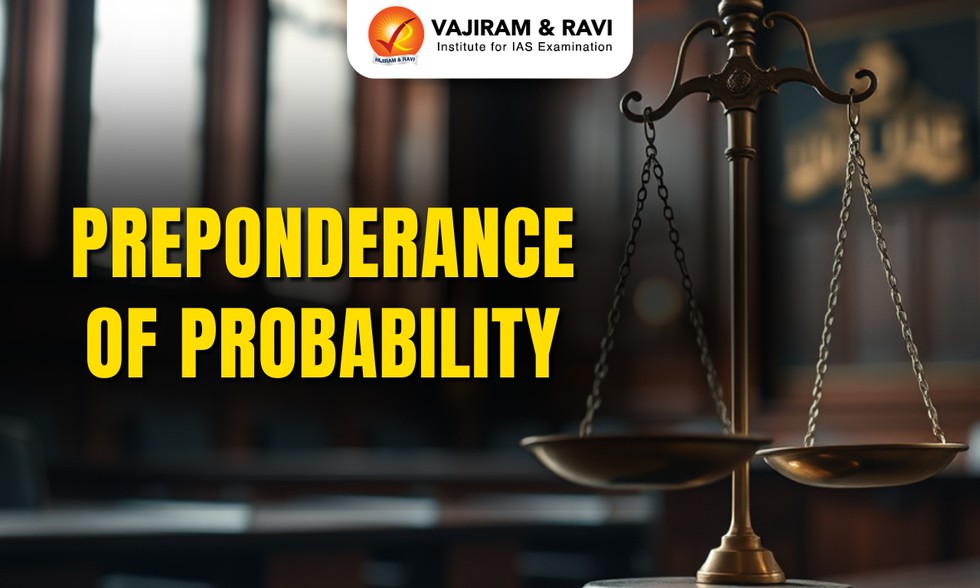About Preponderance of Probability:
- It is a widely accepted standard of proof in civil proceedings.
- The preponderance of probability refers to the greater likelihood of one event or fact over another.
- In this context, a fact is considered proven when the evidence suggests that the occurrence of the fact is more likely than not.
- It is not about certainty or eliminating all doubts but rather about weighing evidence to see which side presents a more probable scenario.
- In civil cases, the party bearing the burden of proof needs to show that their version of events is more plausible than the opposing party’s.
- This standard contrasts sharply with the criminal law standard of “beyond a reasonable doubt,” where the prosecution must prove the defendant’s guilt to a much higher level of certainty.
- In civil cases, by contrast, the balance of probabilities leans toward the more convincing narrative.
- In Narayan Ganesh Dastane v. Sucheta Narayan Dastane (1975), the Supreme Court of India stated that under Section 3 of the Indian Evidence Act, a fact is said to be proved when the court believes in its existence based on a “preponderance of probability.”
- The court applies this test by evaluating conflicting probabilities and choosing the most probable
- Application of Preponderance of Probability in Civil Law:
- The preponderance of probability is the standard of proof used in most civil litigation.
- Civil cases typically involve disputes over rights, contracts, property, or torts, and the plaintiff must demonstrate that their claim is more likely true than false.
- For example, in a breach of contract case, the plaintiff must show that it is more likely than not that the contract was breached.
